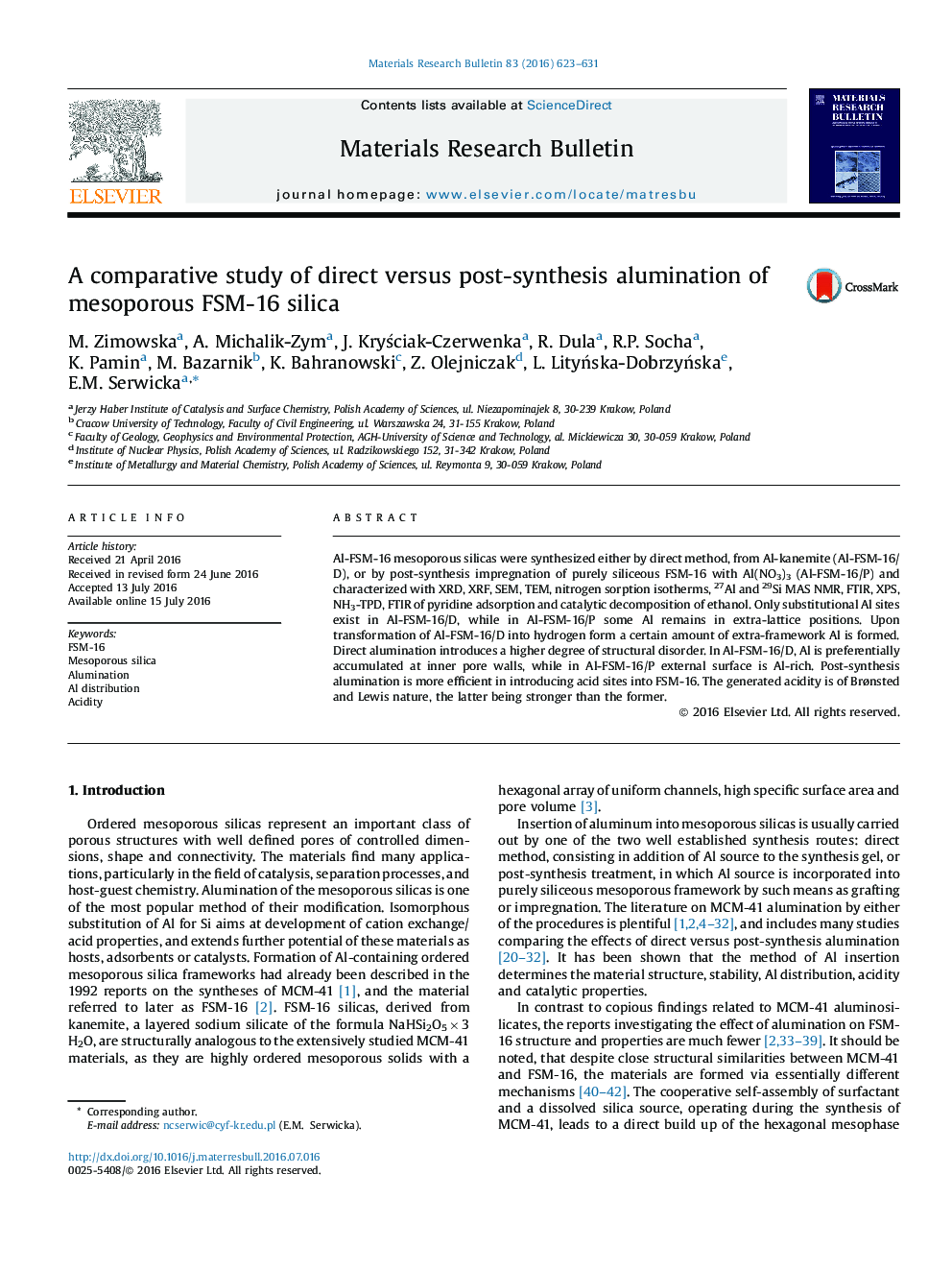| کد مقاله | کد نشریه | سال انتشار | مقاله انگلیسی | نسخه تمام متن |
|---|---|---|---|---|
| 1487076 | 1510692 | 2016 | 9 صفحه PDF | دانلود رایگان |

• Long, medium and short range order depends on the manner of Al insertion.
• Distribution of Al can be controlled by the method of alumination.
• Direct alumination affects skeleton vibrations more than the post-synthesis one.
• Post-synthesis alumination is a more efficient means of introducing acid sites.
Al-FSM-16 mesoporous silicas were synthesized either by direct method, from Al-kanemite (Al-FSM-16/D), or by post-synthesis impregnation of purely siliceous FSM-16 with Al(NO3)3 (Al-FSM-16/P) and characterized with XRD, XRF, SEM, TEM, nitrogen sorption isotherms, 27Al and 29Si MAS NMR, FTIR, XPS, NH3-TPD, FTIR of pyridine adsorption and catalytic decomposition of ethanol. Only substitutional Al sites exist in Al-FSM-16/D, while in Al-FSM-16/P some Al remains in extra-lattice positions. Upon transformation of Al-FSM-16/D into hydrogen form a certain amount of extra-framework Al is formed. Direct alumination introduces a higher degree of structural disorder. In Al-FSM-16/D, Al is preferentially accumulated at inner pore walls, while in Al-FSM-16/P external surface is Al-rich. Post-synthesis alumination is more efficient in introducing acid sites into FSM-16. The generated acidity is of Brønsted and Lewis nature, the latter being stronger than the former.
Figure optionsDownload as PowerPoint slide
Journal: Materials Research Bulletin - Volume 83, November 2016, Pages 623–631